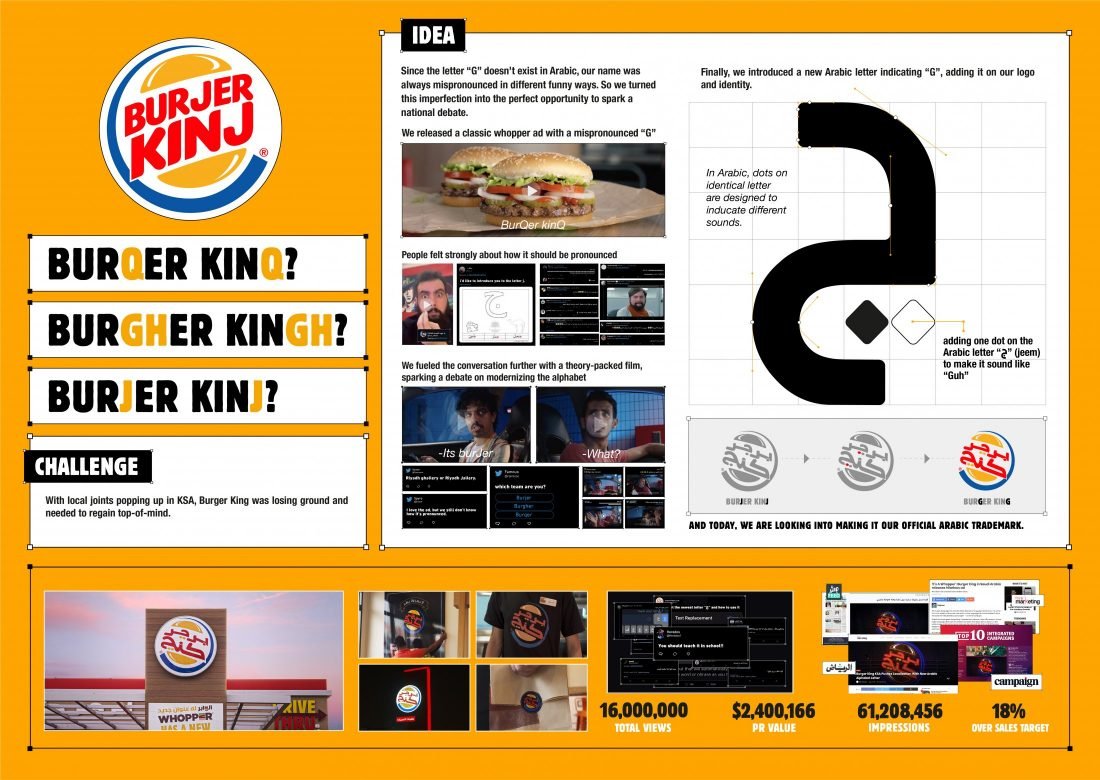Growing up bilingual meant some things were bound to get lost in translation.

I mean some of the things I say make 0 sense to my non arab friends.
Burger king KSA challenged that , Saudis have a distinct way of saying burger king as there is no letter G in Arabic
A case study showed a poll, an Arabic keyboard and it got people talking! How do you say it? BURJER KINJ OR BURGHER KINGH
Wunderman Thompson created this viral ad for them emphasizing it, they went as far as twitter polls and customized menus and it went viral! They invited people to ask them how they say it?
Turning this imperfection to an opportunity, the mispronounced G!
Their employees wore hats with the new logo and made it their official logo and adding it to the keyboards.
This case study is a classic example of engaging and how to leverage behavior change.
This sparked a debate among my friends and colleagues. We keep ordering it and mispronouncing it

Sometimes, a simple effect can go viral, making it top of mind awareness when ordering in.
It’s all about engagement, understanding human behavior and changing public perceptions. I mean you wouldn’t walk into a McDonalds and order a whopper! Here’s some ways to behavior change marketing.
- Identify Your Audience (and be specific!)
Before you can change anyone’s mind, you need to know exactly whom you’re talking to. “People” is not a target audience. Neither is “women” nor “teenagers.” Different types of people are influenced in very different ways, which is why the most effective behavior change campaigns have VERY segmented audiences.
- Do Your Research (no, really – actual research)
Your target audience is (usually) not you. You may think you know them – but do you really? One of the most important pieces of Behavior Change Marketing is having a deep understanding of your target audience. How they think, feel, act…where they hang out, how they talk, who they trust, etc. Don’t assume – do your research. In-depth quantitative and qualitative research is critical in developing an effective behavior change campaign.
- Dig deeper than your tagline
Coming up with the right message is a big part of behavior change marketing – but it’s just a part. Inciting change requires an integrated approach that includes digital, traditional, and interactive tools. Social media, video, direct mail, and experiential marketing all play a part in giving the target audience the knowledge, will and skill to change.





